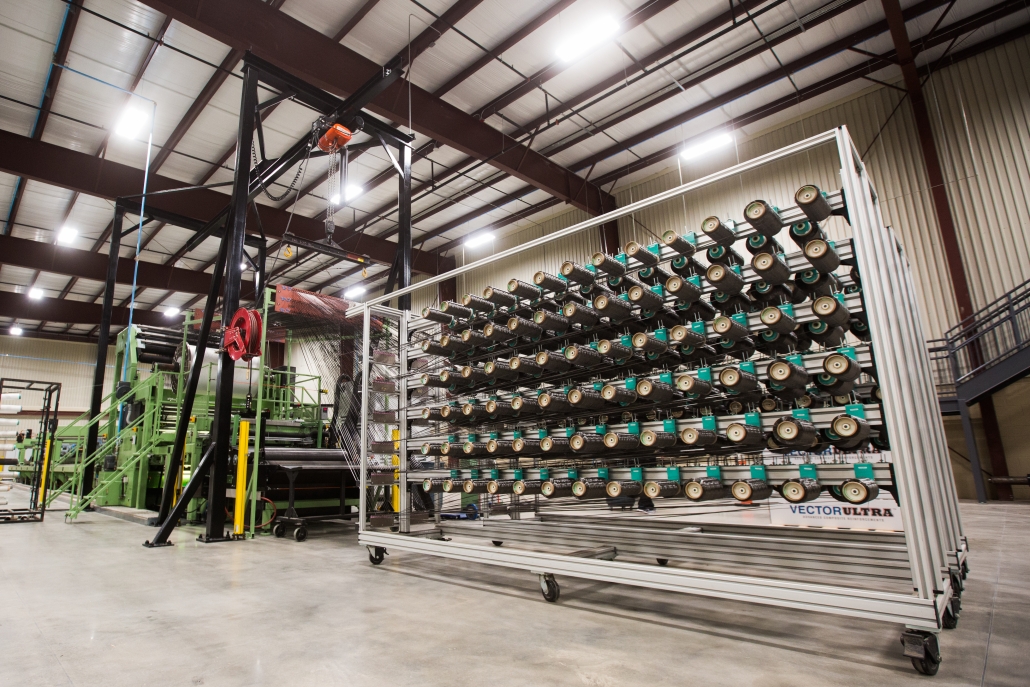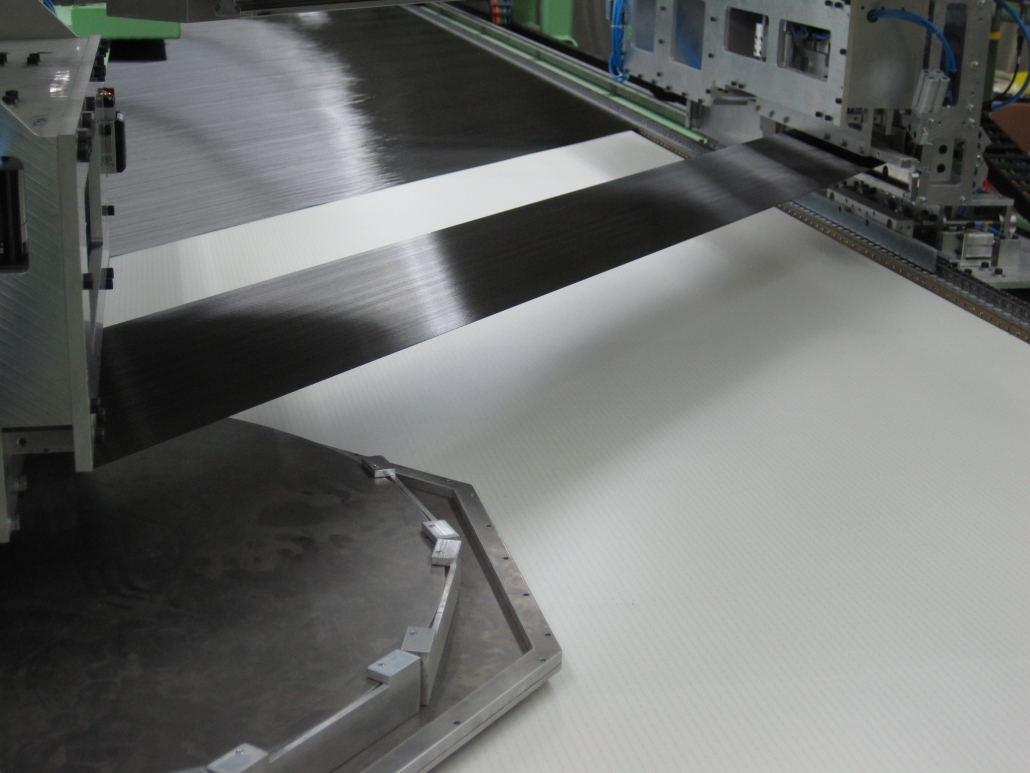Reinforcement Series – VectorUltra
VectorUltra reinforcements are designed to be used in laminates where lightweight, high stiffness and strength are key elements of the design criteria. Depending upon the application, reinforcements can be manufactured exclusively from high modulus fibers, such as carbon, aramid, and S-glass, or can be offered as hybridized versions with E-glass.
Carbon fiber is used primarily to provide high stiffness (or modulus), but also provides high fatigue resistance, thermal and electrical conductivity, and low thermal expansion. Aramid fiber (often known by the brand name KEVLAR® by Dupont) may be used to add toughness, abrasion resistance, and increase impact resistance. In most cases VectorUltra™ reinforcements are made to order but Vectorply stocks several styles for immediate delivery such as C-BX 1200, a 12oz/yd² (400 gsm) carbon double bias, or C-LA 1812, an 18.8oz/yd² (640 gsm) carbon unidirectional. Double bias aramid and E-glass hybrids in 12oz/yd² (400 gsm) and 17oz/yd² (570 gsm) are also normally available. Call for details or click on the link at the bottom of the page for a complete listing of standard VectorUltra reinforcements. Custom versions can be designed to suit the requirements but may be subject to minimum order restrictions.
The Carbon Advantage
Nothing reinforces composites quite like carbon fiber. Pound for pound, compared to steel, carbon fiber is 3.5 times stiffer and more than 12 times stronger.
There are two different kinds of carbon fiber – PAN and Pitch based. PAN based fibers, the most popular in the industrial and sporting goods industry are easy to process, have excellent mechanical properties, and are much more widely produced than Pitch based fibers. PAN fibers are acrylic (polyacrylonitrile) containing carbon backbones that are heated under tension at 200-300ºC to align the molecules for higher stiffness (or modulus). The temperature is then raised to 1000ºC in a nitrogen atmosphere to carbonize the fibers.
To produce high modulus carbon fibers (>45 Msi) PAN fibers are then heated under an inert atmosphere at 3000ºC to arrive at almost pure carbon. Here is the distinction between graphite fibers and carbon fibers. While carbon is approximately 93% to 95% carbon, graphite is almost 100% pure carbon.
The price difference between carbon and graphite is significant. Pitch based carbon fibers on the other hand are generally higher in modulus, lower strength, and can be more difficult to process. Lower modulus versions of pitch based carbon are available as well, and are typically used in thermal management applications due to their high thermal conductivity.
Examples of applications requiring carbon fiber would be aerospace parts where there’s a demand for high strength, and light weight. Components such as the International Space Station, satellites, rocket motor casings, and expendable launch vehicles used the Boeing Delta rocket programs all require carbon fiber reinforcements to meet performance and weight criteria. Typical carbon fiber used in boat building is standard modulus (33 Msi) where low weight is essential, but some stiffness is traded for greater elasticity or impact resistance.
Carbon is being used as the primary reinforcement in not only hull sides and bottom, but in the superstructure of large boats and ships as well. Carbon unidirectional fibers placed on deck beam stringer caps can help reduce the depth of the beam thus lowering overall deck height and increasing the span between bulkheads, opening the door for more interior design options. Carbon fiber’s stiffness and strength can also be used to handle the highly concentrated loads such as those found on a sailboat i.e. mainsheet travelers, chainplates, rudder bearings, masts and booms.
Vectorply produces a variety of different VectorUltra carbon fiber reinforcement architectures to help optimize material properties for any application. VectorUltra architectures are available in unidirectional (0°), biaxial (±45° or 0°/90°), triaxial (+45°/90°/-45°), and quadraxial (0°/+45°/90°/-45°) in a wide range of areal weights.


